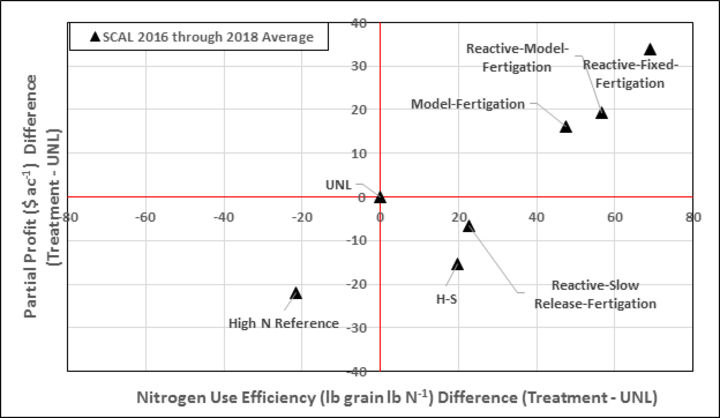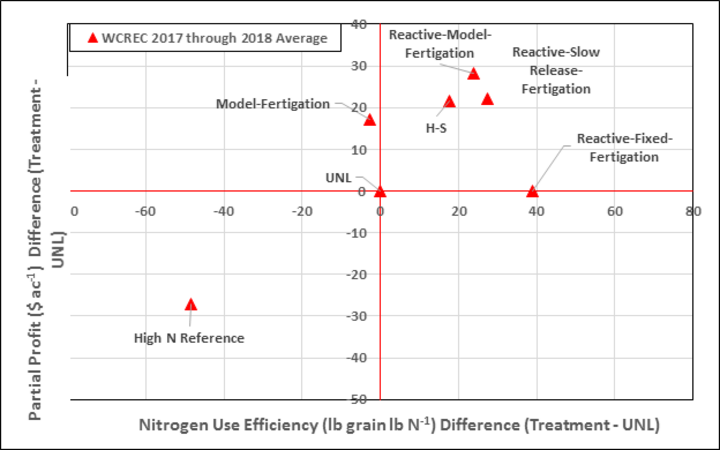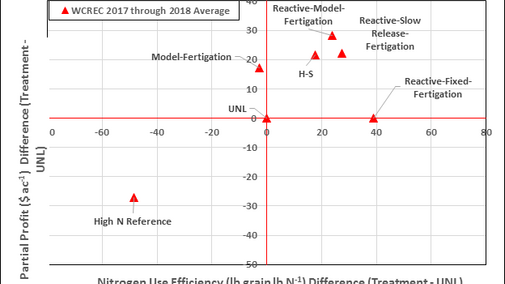- Fertigation timing determined by crop sensors improves profit and nitrogen use efficiency (NUE) over current best management practices.
- Farm scale implementation of sensor-based fertigation has been shown to improve profit and NUE compared to grower management.
- Large scale variability at farm scale
Methods
- Implemented three years of sensor- and model-informed fertigation treatments at SCAL (Clay Center) and WCREC (North Platte).
- Treatments:
- Check (5 lbs of N/acre as starter only).
- High N Reference (non-N limiting treatment).
- UNL algorithm (current N rate BMP, one time in-season sidedress informed by yield goal and N credits).
- Holland-Schepers (H-S) (sensor-BMP similar to Project SENSE, one time in-season sidedress directed by sensors) (Holland and Schepers, 2010).
- Reactive-fixed fertigation (fertigation directed by sensors: react to deficiency, N rate fertigated is fixed).
- Reactive-model fertigation (fertigation directed by sensors: react to deficiency, N rate fertigated is determined by crop computer model).
- Slow release reactive-model fertigation (initial N applied as polymer-coated urea [slow release], fertigation directed by sensors: react to deficiency, N rate fertigated is determined by crop computer model).
- Model-fertigation (not sensor informed, proactive N management is informed by crop model).
- All but Check received an initial base rate of N to maintain N sufficiency until sensors become reliably effective at V8.
- N was applied as UAN with exception of the slow release treatment that received slow release nitrogen as the initial base rate.
- Sensor based methods use sufficiency index (SI) to indicate level of N stress.

Figure 1. Average partial profit and nitrogen use efficiency for each treatment from 2016 through 2018 at the university's South Central Ag Lab near Clay Center. 
Figure 2. Average partial profit and nitrogen use efficiency for each treatment from 2017 through 2018 at the university West Central Research and Extension Center at North Platte Results
- Conclusion of three-year (five site years) study confirms that sensor fertigation treatments are consistently the most profitable and efficient methods of applying N compared to current best management practices (BMPs) (Figures 1 and 2).
- Sensor-based N management methods are more efficient that current BMPs.
- Sensor-based sidedress application varied in success between sites and years.
- In 2016 at SCAL site, the reactive-slow release-fertigation treatment did not have a corrected model for slow fertilizer N release. This resulted in excessive N application that resulted in a less profitable application. In 2017, a corrected slow release model was added, and the results indicate that in 2017 and 2018, this method was both profitable and efficient compared to current BMPs.

